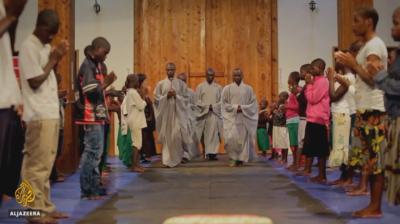Management, co-management or no management? Major dilemmas in sustainable exploitation of inland fisheries in the SADC Countries
Timeframe: Jan 1998 - Dec 2001
Funder: Norwegian Research Council
The project contains ten case studies and a synthesis. The case studies have been conducted in five medium sized lakes in the Democratic Republic of Congo, Malawi, Zambia and Zimbabwe. The synthesis focuses on three features relevant for the management of freshwater fisheries in the South Africa Development Community (SADC) region:
- How has fishing effort developed in these lakes over the last 50 years?
Despite a considerable increase in the total fishing effort in the region, the report demonstrates great variation in effort dynamics both in time and place. The report distinguishes between changes related to the number of people and to changes in technology and investment patterns and shows that most of the increases in effort have been population-driven rather than investment-driven.
- What causes the changes in fishing effort?
The level of mobility among fishermen - into as well as out of the fisheries sector - is considerable and this mobility is strongly influenced by economic features external to the sector (such as changes in the Copperbelt economy). Changes in the number of fishermen also depend on the effectiveness of the local access regulating mechanisms found to exist in all the lakes. The moderate prevalence of investment-driven changes in these fisheries is analysed with reference to deficiencies in infrastructure, credit support and complex and often unclear social relations prevailing at the local level. When occurring, investment-driven increases are generally induced by access to external financial sources.
- How do fishing effort and environmental factors compare in their effects on the regeneration of fish stocks?
In the five lakes studied, environmental drivers are often more significant than fishing effort in explaining changes in fish production and the strong environmental influence is not only restricted to cases where environmental variability is very high (e.g. Lake Chilwa). Total yields in the multi-species and multi-gear fisheries are surprisingly stable over a large range of effort levels, but changes in species and size composition are considerable. So, in these fisheries with small-scale operations there is limited danger in increased diversification of fishing patterns and they are close to an overall unselective and ecologically sound fishing pattern, highly adaptive to changing conditions. The danger for fish stocks increases with increased gear efficiency.
Fisheries in the SADC freshwaters are found to function as an economic buffer and as a safety valve for thousands of people moving in and out of the fisheries according to the opportunities in the national economies. At the same time the stocks tend to be less threatened than many tend to believe. Classical management theory's emphasis on limiting numbers of fishermen and co-management strategies such as exclusive economic zoning may represent a danger to the stability of this situation, even if management may be required to maintain biodiversity. There may be a need also to monitor and establish measures to control investment-driven growth in effort.


